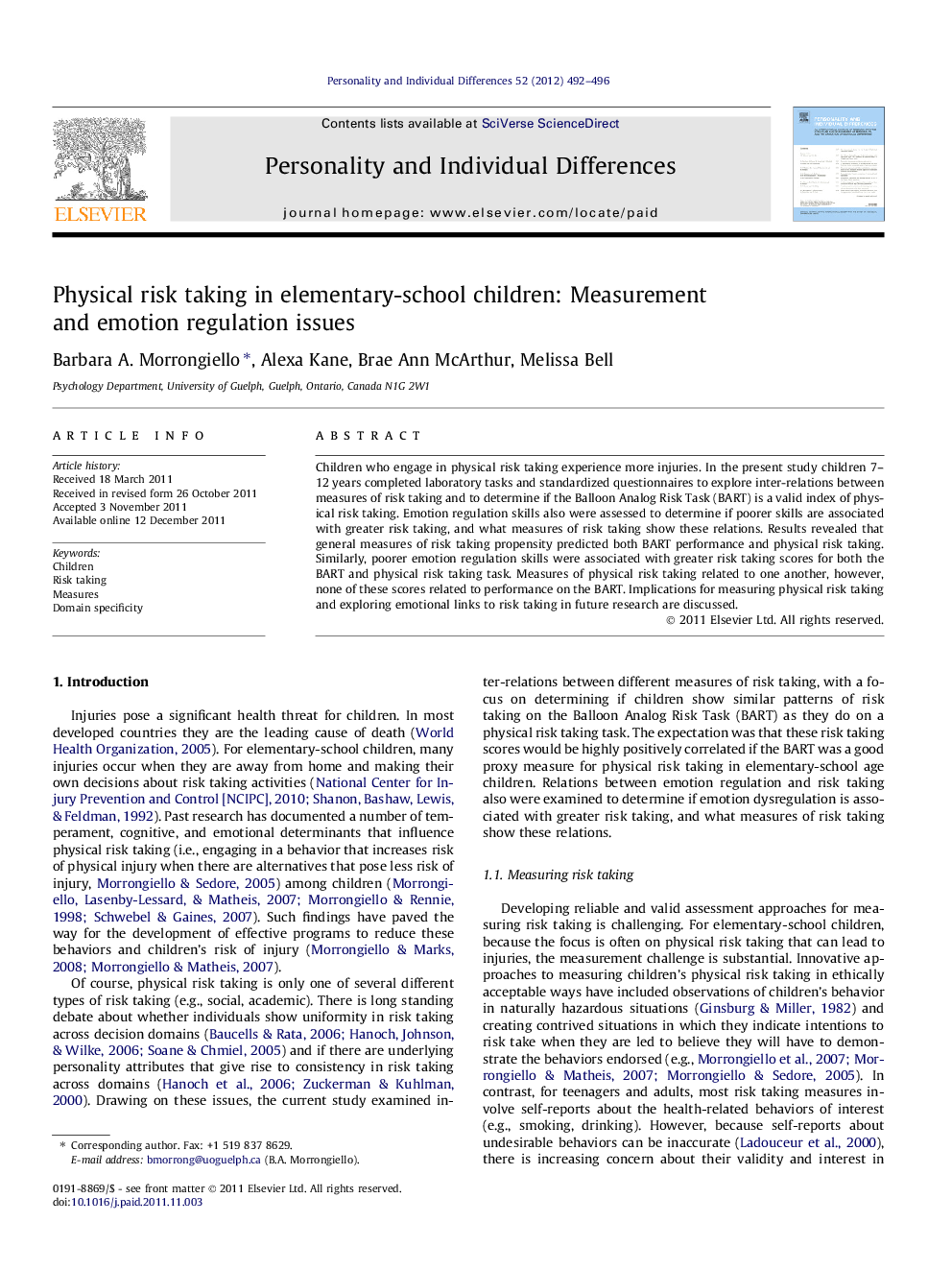| Article ID | Journal | Published Year | Pages | File Type |
|---|---|---|---|---|
| 891112 | Personality and Individual Differences | 2012 | 5 Pages |
Children who engage in physical risk taking experience more injuries. In the present study children 7–12 years completed laboratory tasks and standardized questionnaires to explore inter-relations between measures of risk taking and to determine if the Balloon Analog Risk Task (BART) is a valid index of physical risk taking. Emotion regulation skills also were assessed to determine if poorer skills are associated with greater risk taking, and what measures of risk taking show these relations. Results revealed that general measures of risk taking propensity predicted both BART performance and physical risk taking. Similarly, poorer emotion regulation skills were associated with greater risk taking scores for both the BART and physical risk taking task. Measures of physical risk taking related to one another, however, none of these scores related to performance on the BART. Implications for measuring physical risk taking and exploring emotional links to risk taking in future research are discussed.
► This study explored inter-relations between indices of risk taking and performance on the BART. ► It also considered if children poorer in emotion regulation skills take more risks. ► Risk taking propensity predicted both BART performance and physical risk taking. ► Children poorer in emotion regulation skills scored higher on risk taking. ► However, measures of physical risk taking did not relate to BART performance.
